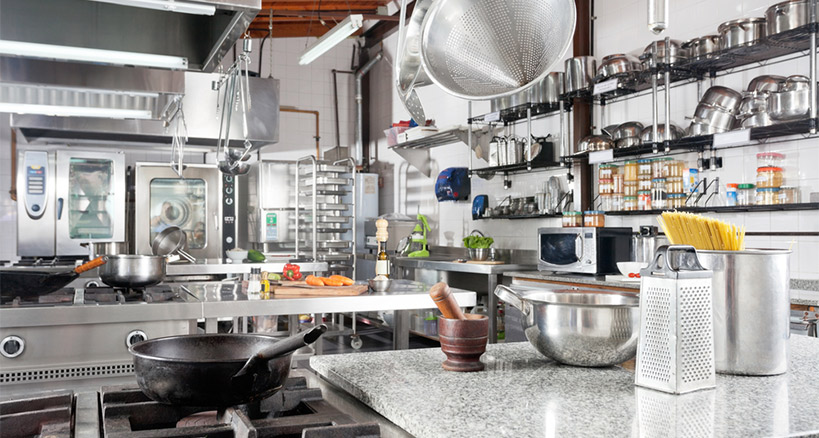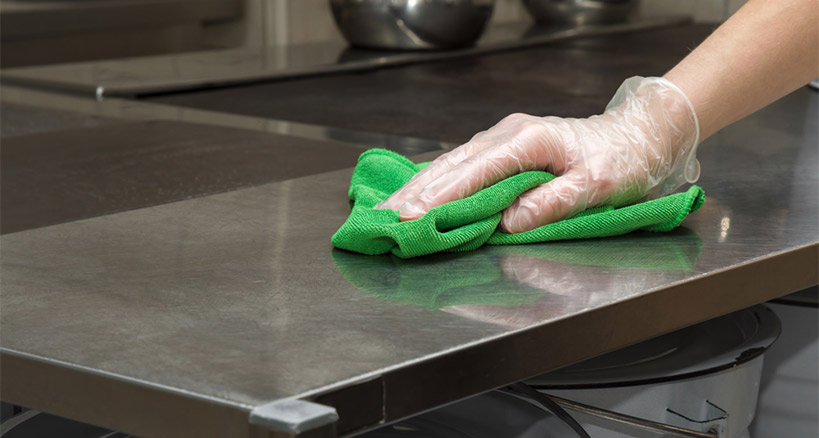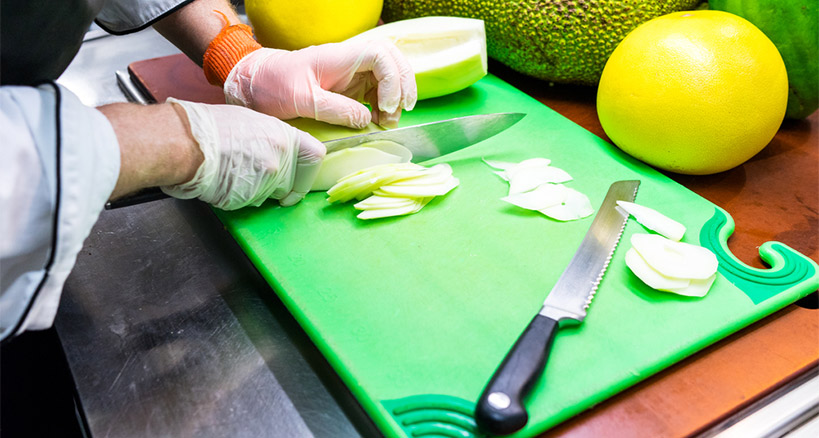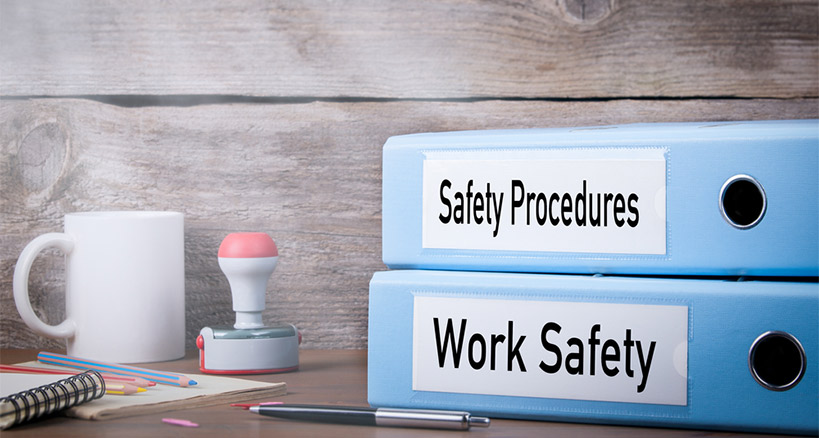
Restaurant Health Department Inspections
Restaurant owners generally view a visit from the health inspector as an inconvenience – or worse – as opposed to an opportunity to learn. Most restaurant owners dread health inspections; however, as we previously discussed, preparing for these inspections means that there is no reason to fear the inspector’s visit. Proper food storage, careful personal hygiene, meticulous attention to cleanliness, ongoing training, and self-inspections are all part of the “before.” Now, we’ll talk about how you should act during, and after, the health-inspection process.
Frequency of Health Inspections
The more complex the food-service operation, the more often the health department will visit. A restaurant where meat and fish are prepared and served could be visited two or three times a year, whereas a coffee house or a small bakery will require inspections just once annually. However, other factors can affect the frequency of an inspector’s visit. If, for instance, you regularly receive low inspection scores, you can expect to be inspected up to four times a year. Similarly, if someone reports your establishment for a foodborne illness, or for substandard operating procedures, the health department is authorized to come out and inspect based on that complaint.
Your Restaurant’s Health Inspector
An inspector is usually assigned to a particular area, so you will probably work with the same person repeatedly. This can be a blessing in that you can get used to the person’s style of inspecting and what he or she tends to look for; however, if you don’t get along with the inspector, this can be more like a curse. Keep in mind that, especially in areas with larger populations and therefore more inspectors, if you feel that your inspector’s attitude may be affecting the fairness of the grading process, you can call your local health department and request another inspector. In such cases the original inspection is still valid; however, a new inspector could arrive within a few days to issue a new inspection report.

The Inspection Process
The timing of the inspector’s visit may be random, but it will always occur during your restaurant’s posted operating hours. When the inspector arrives, whoever first encounters him or her should make known to the kitchen staff that an inspection is about to take place, without being too obvious. Someone should also inform the employees in the front of the house that the health inspector has arrived to check the facilities.
The inspector will usually ask for the person in charge, who should then inquire as to what area the inspector would like to see, or what information he or she would like to have. Often at this point the inspector will want to look at copies of the last inspection report, management and employee food safety certifications, hazard analysis and critical control points plans (HACCP), and permits and licenses. All of these documents should be safely filed away in the Food Safety Binder, discussed in the previous post.
Be Polite and Respectful
As you walk through your restaurant with the inspector, you should take notes and explain situations if asked. Do not be combative or defensive; be polite and professional. You can dispute any violations you feel are inaccurate, but you should raise disputes in a non-confrontational way. When you disagree with an inspector’s assessment, ask how he or she arrived at that decision, and offer your interpretation of the regulations. The discussion often can help you arrive at a solution. The inspector is expecting your full cooperation, and when you provide it, he or she will usually give you time to explain a situation.
When it comes to an inspector’s style, there is no norm. Some inspectors are very strict, and some are quite lenient. Some will go into great detail explaining the reason for a violation and others will not. The length of a given health inspection depends on the size and complexity of the food operation and the facility’s layout. After the walk-through, the inspector will write the inspection report and review it in depth with the person in charge, and then both parties will be expected to sign the report. The report is left at the site or emailed to the person in charge, and in most cases it will also be posted to the Health Department’s website and become part of the public record.

What Health Inspectors are Looking For
The health department’s website features their Restaurant Inspection Guidelines, which describes the food codes inspectors are grading against. Inspectors are looking for a wide assortment of violations, ranging from lack of cleanliness, incorrectly labeled containers, missing thermometers in refrigeration units (and incorrect temperatures levels for storing foods), lack of receptacles in trash areas, and lack of rodent proofing. The inspector will also check that food storage is at least six inches off the floor and away from walls; that staff has clean uniforms and clean hands (or gloves); that water for washing one’s hands is hot enough and that hand-washing sinks are clean. No smoking and no drinking from open containers are also items on the inspectors list.
Common Health Violations
The following restaurant health violations are the most common:
(A) Good retail practices violations
Good retail practices violations are low-risk violations that do not require immediate action. The top violations in this category are: 1) Nonfood-contact surfaces unclean and in disrepair—this refers to items that do not come into direct contact with food; 2) Equipment/utensils – unclean and in disrepair—refers to utensils and equipment that are being used in the restaurant, including old or dirty equipment and cooking utensils; and 3) Plumbing, fixtures, back-flow devices, drainage —covers all issues regarding water flow from sinks, drains, toilets, and refrigeration.
(B) Top minor violations
A minor violation does not pose an imminent health hazard, but it does warrant immediate correction. These include: 1) Food in bad, unsafe condition—food that is left out or stored in unsafe areas (e.g., near cleaning supplies or in a restroom), and when ice crystals are forming on food due to improper defrosting and refreezing procedures; 2) Inadequate hand-washing facilities supplied and accessible (could also be a major violation depending on how many violations occur), such as lack of hot water, soap, and/or paper towels, and not enough sinks in a work space; and 3) Toxic substances improperly used, identified, and stored.
(C) Top major violations
A major violation poses a health hazard. It warrants immediate correction and may require closure of the restaurant. A major violation could be: 1) Improper hot and cold holding temperatures – can occur in refrigerators, and on stovetops; 2) Hands improperly washed, gloves used improperly; 3) Food contact surfaces unsanitary—violation can occur when surfaces that come into contact with food are not washed, rinsed, and sanitized; when sanitation buckets are missing from active food preparation stations; when the supply of sanitizing solution is too low; and when mold and yeast are found on the inside rim/ice chute of an ice machine (ice is a food); and 4) Communicable diseases: This violation can occur when employees show up for work sick.

After: Responding to the Results of Your Health Inspection
If you walked along with the inspector during the visit, the inspection grade your restaurant receives should not come as a surprise. The first thing you should do when you sit down with the inspector to review the findings is to take them seriously. Retrain everyone in the areas identified in the report and make sure that you fix and repair violations for the long haul.
Correct mistakes as soon as possible; repeated violations can give inspectors a bad impression of your commitment to food safety. This correction process starts with a prioritized list, and because repair and maintenance issues take time and cost money, it is best to start with the big things, such as eliminating mold and repairing refrigeration units.
If an inspection reveals a sufficient number of violations, so that the restaurant will not earn or maintain a top rating, you will want a re-inspection. In the interim, you may be offered a “Grade Pending” alternative, which gives you time to correct the violations before being re-inspected. This is usually a viable alternative to posting a less-than-top rating, and easier to explain to guests and restaurant bloggers. If you schedule a re-inspection, be sure to take care of all issues without delay.
In Between Health Inspections
Be proactive about food safety. Look for opportunities to work with food inspectors outside the framework of routine inspections. For example, if your state or county has a new food safety regulation or an updated food code, consider contacting your inspector to ask about the changes and how they will impact your restaurant.
Share your food safety plans. Inspectors are often interested in the steps you’re taking to comply with new food safety rules and regulations. What they learn will help them advise other restaurants. Seek your inspector’s advice. Are you launching a new product or testing a new process? Ask your health inspectors how any changes may be impacted by the food code. They might have suggestions that will help you improve your business.
Taking the Stress out of Health Inspections
While no one enters the restaurant business because of a passion for food safety, owners and managers must take it seriously. By protecting customers from foodborne illnesses, you are protecting your restaurant’s reputation, especially today when bad news travels faster than ever. Staying on top of your food-safety program is good business, and will take much of the stress out of visits from the health inspector.